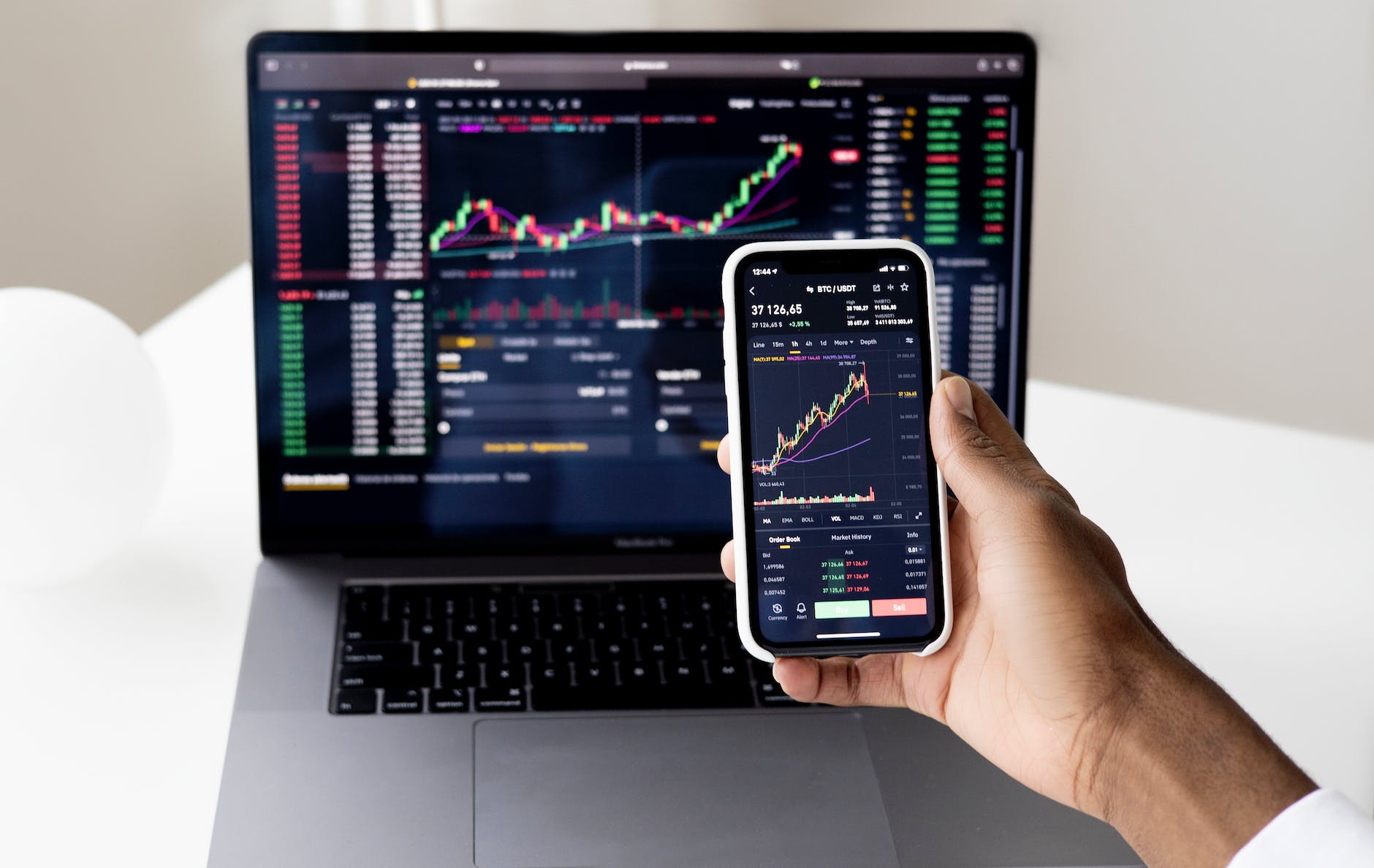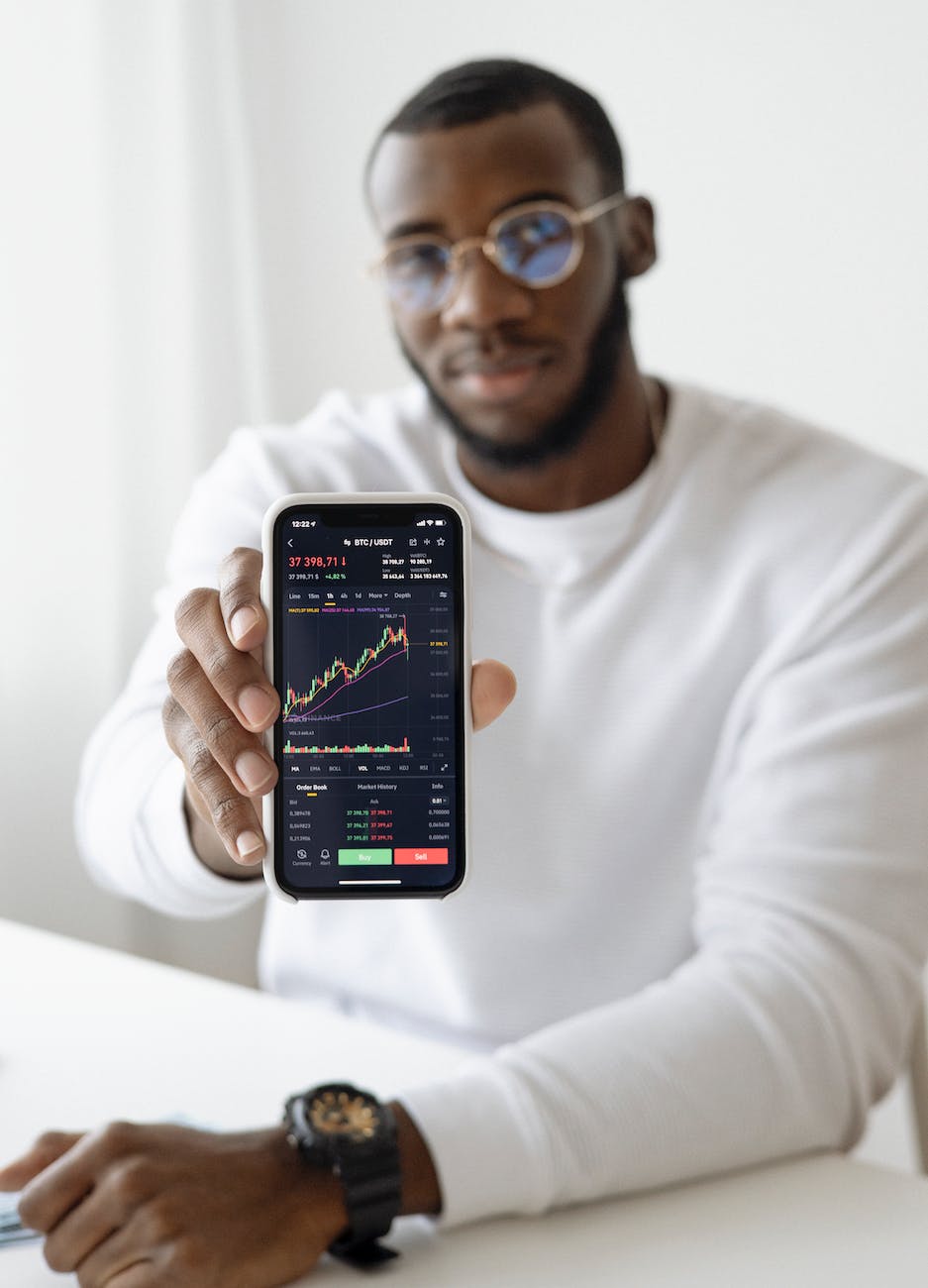If you are searching about “How to LEARN Stock Market Investing” then this would be your absolute search for sure because the article will provide you “the best way to learn stock market investing as well as trading”.
Although this article is focused for the beginners but very much helpful to the experienced traders and investors. This will provide you the perfect guidance for
- Preparation of budget plan by knowing our cost of lifestyle
- Clearing all the doubts related to basic concepts
- Right psychology for Trading and Investing
- Different analysis methods
- Useful software tools
- Business movies and web series.
Let us begin to main content of the path to success in Stock Market investing.
How to learn stock market investing
Stock Market Investing is a science as well as an art. Which means, we need to use our creativity with facts and technical knowledge to earn money. There is no specific one-fit-for-all formula.
This article will guide you to understand core concepts related to trading and investing, their technical skills and tips to practice over to gain excellence in building customized strategies for making profits on investing.
Investing is the set of Skills which borrows from multiple branches of knowledge, such as,
- Data Science (For collecting relevant data)
- Statistical Knowledge (For Technical Analysis)
- Corporate Law (To understand different limitations on companies)
- Psychology (Trader’s Behavioural Science)
- Business and Entrepreneurship (Analysing company’s Financial Instruments)
- Management (Managing Risk for better returns)
- And much more
But many people find it hard to identify what comes first and what goes next. So, here we will be going to learn Stock Market investing.
Why to learn Stock Market Investing?
Before proceeding further with the actual steps, we should learn why should we learn investing. If we are not clear why one should learn investing, it will be clear waste of time and money. Here are some strong points you should consider before learning stock market investing.
This is also a part of the article “how to learn stock market investing”.
Financially Independent


No matter whether you are a professional, home-maker or a self-employed businessperson. Money is required for all.
If you learn how to invest in the stock market, you can grow your money for your stabilized future.
Being wise and Smart
By investing in the stock market, you will be very smart and intelligent towards all kinds of money related decisions such as,
- Shopping goods which are really required
- How much money should we spend on entertainment and books?
- Using credit cards smartly.
- Using resources effectively and efficiently to grow savings.
- Know how to save more and invest more
Many other decisions will be effected once you start learning stock market investing
Growing money more than others


When you know stock market, you will know all other investment vehicles that will actually help you to decide which investment is good for you.
As compared with your friends and relatives. They just feel satisfied by investing in Fixed Deposits, while you will earn multiple folds of returns. You will easily beat inflation in future just by earning more returns on investment.
Creating backup income
When you learn to invest in the stock market, you will actually be creating another source of income other than your business or profession. When you invest in the stock market, you can have dividends, capital appreciation benefits on the money you saved.
After 10-20 years around, you will notice that you are earning more income from stock market than your job. This will be happening in reality if you are seriously investing by learning stock market properly.
Tax Benefits


If you are having income source such as Salary, then you might not have much tax benefits but when you invest in the stock market, you will get higher income with lesser tax payments. Also, you can set off losses against your profits to reduce your tax. Specially, this is completely legal.
High level of safety
No matter where we invest our money. Every investment has some sort of Risk as well as Return.
Safety of investment is another factor of Risk. Where Stock Market is highly safe as it is governed by regulatory bodies.
Flexibility and timeliness
While investing in the There is the highest level of flexibility in terms of encash, time and place.
Understanding Concepts
The first step of learning the stock market is by understanding concepts of the Share Market. Without understanding this, we can not analyse or invest in a company.
What are Shares / Stocks?


Shares (or Stocks in US term) are the part ownership of any company. When we buy a share of any company, we become part owner of that corporate entity. That means our money used as the capital of the company.
Each share has same quality, hence it is also called as EQUITY (Equal Quality) Shares.
Although company’s capital is large number, but we can easily invest our money and buy a small portion of its ownership.
The following example will be helpful to understand for you.
ABC Ltd. has the capital of Rs. 5000 Crores and suppose company decided to keep 10 Rupees for each share price. Then it will have 500 Crores of shares.
Then anyone can easily invest his 10 Rupees to get its ownership.
If you wish to sell, then you can easily sell to others who are interested to buy.
Types of Income from Shares
There are basically two types of income from the shares. Such as, Sale of Capital, Dividend Income. Let us understand each of them briefly.
Sale of Capital
This income is from the profit when we sell shares at high rate from the rate we purchased.
Suppose you bought 5 shares of RELIANCE at Rs. 1000 per share. After 3 months the price went up to Rs. 1500.
Your per-share profit is Rs. 500 and whole profit for 5 shares is Rs. 2500
Note : Formula = Profit per share x Number of Shares = 500 x 5 = 2500
Dividend Income
We get this dividend income without selling our shares.
No matter where the share price is, we get this income from the operating profit of the company.
Company gives dividend income several times in a year.
This income we get only if we invest our money in the company’s shares.
Investment Account
If you wish to invest your money in the share market, you are able to invest only through the investment account. You need to have Demat and Trading account to invest your money.
Demat Account
Demat Account is a type of account which stores all the shares we invest. This is owned by a Government company, and it is completely protected. There is no chance of transferring shares without our permission.
Trading Account
Trading Account is a Broker’s account though this we actually transfer money and buy shares from the market.
This account is linked with the Stock Market, Demat and Bank account.
Choosing the right trading account is very important in order to have safety and full of features.
If you wish to open Demat and Trading accounts within 5 minutes, just click the button below to know more.
You can open both accounts at the same time. Also, you will get ultimate guide to start investment successfully after opening your account.
Types of Market
Everyone gets a question that, actually, who operates and moves shares prices? Your doubt will be cleared now.
There are typically two types of Markets. Primary and Secondary. Let us understand each.
Primary


In the Primary market, we deal directly with the company. But it is not on a day-to-day basis.
Company decide whether to buy or sell shares through the corporate events. The price of the shares are decided by the company itself.
We investors analyse and decide whether the company’s decision is profitable for us or not, and then we deal with the company.
Some of the corporate events are as below.
- Initial Public Offering (IPO)
- Follow-on Public Offering (FPO)
- Right Issue
- Preferred Allotment
- Bonus Issue
- Split of the Shares
- Mergers and Acquisition
Secondary
When we buy or sell shares in the Exchange like NSE or BSE. We trade / deal with other traders like us. Here we do not deal with the company. Whatever the shares we buy from the exchange that are the secondary market deals.
In this market, we people decide share price on the prediction of future profit of the company.
If more people are interested in buying, then the price of the share goes up. While more people are not interested to remained invested, then share price goes down.
Market Timing


Although we have very much flexibility to buy or sell at any time, but still market has a specific time. In which we need to place buy / sell orders.
Stock Markets do not work 24 by 7.
If we discuss Indian stock exchange, our Equity Share Market has the following timetable.
- 09:00:00 to 09:07:30 = Pre open session (To define opening price from buying selling pressure)
- 09:07:30 to 09:15:00 = Halt before normal opening (Protect from sudden move in the prices)
- 09:15:00 to 15:30:00 = Normal Market Timing
All the timings are as per Indian Standard Timing (In 24 Hours format)
Industry Sectors




















Industry is a field in which every company does its business.
Understanding Industry sectors will guide us to properly analyse and compare performance of any company with others.
Here are some top industries in India. (By its market capitalization)
- Banks
- IT – Software (Click to know top IT companies listed in NSE)
- Finance
- Refineries
- FMCG
- Power generation and Distribution
- Pharmaceuticals
- Automobile
- Insurance
- Chemicals
There are more sectors than this list. You can get access to all the Industry classification by NSE by clicking here.
Corporate Actions
In order to grow, develop or to make business sustainable, all the companies go through some decisions related to capital restructuring. That is also called as Corporate Actions.
Some of the corporate actions are as below.
- IPO – Initial Public Offering
- FPO – Follow-On Public Offering
- Buyback
- Split / Bonus
- Merger Acquisition or Demergers
- Dividend
These corporate actions create new income / investment opportunities for the investors.
Types of Trading
Technically, there are three types of trading as per the timeframe. Such as,
- Intraday – Within a day (Speculation in the Tax language)
- Short term – Within a year
- Long Term – More than a year
But people can add up few to make it clear to explain what is the time horizon on the investment. Those types of trading (as per timeframe) are as below.
- Scalping – Quickly buying & selling to get profit within a day
- Minute Trading – 5 minutes to 60 minutes of trading within a day
- Positional / Momentum or Swing trading – Weekly or Monthly trading
- Value Investing – Investing in high valued companies for the short, medium or long term
- Penny Stock Investing – Investing in many Small companies for the long term
Note : Many people consider short term investing for around 3 to 6 months. While medium term investing considered as 6 months to 12 months period.
Trading Segments
In the share market, there are many segments available to trade. Such as,
- Equity – Actual Shares of a Company (Also known as Equity Cash, Equity Shares, Corporate Stocks)
- Derivatives (Futures and Options) – Helpful for Hedging, Trading or Arbitraging in various instruments such as, Currency, Commodity, Index and Stock
- Mutual Funds
- REIT / InvIT
- ETF
- Debentures (Also known as corporate bonds)
Each of the segment has different features, risk and profitability. We need to understand it before taking any investment decisions.
Analysing Company
In order to invest our hard-earned money, it is our privilege to know, understand, analyse it for the risk, profitability, safety and all other factors.


Types of Analysis
Before investing in a stock / shares of the company, we can use some analysis methods such as,
- Qualitative Analysis
- Fundamental Analysis and
- Technical Analysis
Qualitative Analysis


This is very vast analysis method which mostly used by
- HNI (High Networth Individuals)
- FII (Foreign Institutional Investors)
- DII (Domestic Institutional Investors)
- Venture Capitalist
- And other large institutions
This analysis is used to understand what is the quality of the company. It consists of ultimate factors of analysis. Some of them are listed below.
- Business Modelling
- Understanding psychology of Key Executive Personnels
- Patents and Rights
- Quality and Quantity of Resources, Employees, etc.
- Company’s Ethics
- Entry Barriers
- Vision and Mission
- Corporate Social Responsibilities
- Working Culture of the company
- Future plans and projections of the company
This analysis method might not be practical for the small or retail investors. But it matters a lot for the big investors.
Although Qualitative analysis does not focus on the financial numbers but absolutely focus on the factors affecting the finances.
Fundamental Analysis


This analysis is widely used by every investor, either it is a small or a big investor everyone must focus on the Fundamental Analysis.
Fundamental Analysis represents the financial status of the company. This analysis showcase company’s stability, performance from the last few years and creates a basis to compare with other companies as well.
We analyse the company using its financial instruments such as,
- Balance Sheet
- Profit or Loss Account
- Notes to Accounts
- Shareholding Pattern
- Cashflow statements
By analysing number from the past years, we compare company with other in the same industry and decide whether the company will perform better or not.
Fundamental Analysis also guides us whether share price is undervalued or overvalued (By using PE Ratio)
Technical Analysis


This analysis has only relevance with the movement in the price, how many people are actually buying or selling it.
We use Technical charts to analyse and predict price movement in the future. We need only two factors to being technical analysis. Such as,
- Price and its past movement
- Volume (Number of shares transferred) or Open Interest (in Derivatives)
These two are the basis for applying technical studies. Those studies as in the form of,
- Candlesticks Pattern
- Price Action
- Wave theory
- Volume Analysis (RSI)
- Price Moving Average
- And many other indicators
Analysis mix
If you are following any single of the above analysis method, there might be some chances that you may not be successful.
For that matter, we should apply multiple analysis methods to understand a company’s business, their financial status, their price and volume movement to take right investment decisions at right time.
Investment Tools
Without having an investment account, we can not make our investments. People think that, we should learn investment first, then make entry in it. But practically it is not a right choice.
By this psychology we never start investing because knowledge of stock market is never ending.
We should start investing and parallelly getting knowledge about investment is the right choice.
We recommend you some software and tools which will be definitely helpful to start investing.
There are various tools and software available for stock market investing, such as,
- Investing Account
- Chart Analysis tools
- Fundamental Analysis
- Algo trading tools
- Discussion Forums and Help Groups
- Blog Websites and YouTube Channels
Investment Account
Once you have learned sufficient details about the Stock Market, it is the time to open the doors of stock market by opening your investment account.
Any investor prefer to choose a trading software which is best in terms of
- Cheaper in Price
- Super secure
- Fast and intuitive trading platform
- Reliability
- Best support system
- Cross-platform availability (Android, iOS, Windows, macOS, Linux, etc.)
- Intelligent order types (CO, OCO, AMO, etc.)
- Best technical charts facility (All indicators)
- Integration with Robot/Algo trading, Portfolio Management & Derivatives Strategy Planner
- Multi Device login support
We have understood your requirements, and so we recommend you some of the best broker software for Indian Stock Market trading. Here is the list below.
You can open your investment account just within 5 minutes.
Making investment Entries and Exits
Learning how to make an entry in the share investment or exiting from it is a very important step.
Technically, buying shares are called as making entry in the Stock Market while selling shares means exiting from the investment (also known as Disinvestment).
- Buy = Entry
- Sell = Exit
Giving instructions of Buying or selling called as trading orders. You need to fill up following details while giving trading instructions (Placing trading orders)


Trading Side – “BUY” OR “SELL”
Whether you are buying or selling it.
Product – “Intraday” or “Delivery / Positional”
Here you need to select whether you want to exit from trade just today or wanted to carry overnight (means hold it for short or long term).
In simple words, you need to select whether you are just trading for intraday or for delivery investment?
- Intraday = MIS (Margin Intraday Square-Off)
- Delivery / Positional = CNC (Cash and Carry) or NRML (For Derivatives contracts)
If you select intraday, leverage will be applied automatically. And you can sell shares whether you buy it earlier or not.
Order Type – “MKT”, “LMT”, “SL” or “SL-MKT”
At this section, we decide the entry price.
- MKT = At Market Rate (At nearest possible price)
- LMT = At our limited price rate
- SL = Stop-Loss order along with limit price (Can also be used for bid trade)
- SL-MKT = Stop-Loss entry as per its trigger price
Price = Limit Price and / or Trigger Price
Once you decide Order Type, the price selection window will be active. Here you need to fill up following details as per the Order Type.
- Limit Price = If you select LMT Order type
- Trigger Price = If you select SL-MKT Order type
- Limit and Trigger Price both = If you select SL Order Type
But if you select the market order type, then this part will be automatically skipped.
Order Complexity
Here you can use special type of order which is used when necessary
- Simple = Available for all types of orders.
- BO (Bracket Order) or OCO (One Cancels Other) = Useful for intraday trading, in which you can Select Stop Loss and target in a single order.
- CO (Cover Order) = This order is also used for Intraday. Where you can select only Stop Loss but can not select target.
- AMO (After Market Order) = When the market gets closed, you can place this type of order for next trading session. This will allow you to invest when the market open in the next trading session.
Other Trading tools & software
There are many other software and tools related to trading and investing in the stock market. You can click the article link Best trading apps in India to know more details about all those tools, websites and software.
Hardware resources for trading and investing
This question is asked by many people. They find trading a very exciting game. Frankly speaking, yes, trading is really very exciting, thought-provoking game.
The system hardware requirement varies from the trader to investor.
Let us categories in 3 types of traders.
- Casual
- Amid
- Proprietor
Now, we discuss each of them separately.
Casual Trader
If you invest once or twice a month or year, you are called as casual trader. Then you need not have any kind of laptop or computer.
Machine – Smartphone


Nowadays, mobile phone applications are so advanced that you can trade seamlessly from your smartphone itself on the go.
You can manage your investing through smartphone or even just calling your Stock Broker. They will place orders on behalf of you.
But is will be cheaper and easier to trade on smartphone by our own.
Budget
No extra cost. You can manage with your existing smartphone. Any decent smartphone can be found in the price range of ₹10,000 to ₹40,000 (In INR). The choice is completely personal as per their budget and Requirements.
Amid Trader
If you trade intermittently or seasonal, or by mood, then you are called as amid trader.
Here is the recommendation
Machine – Laptop


I think Laptop is better for Amid Trader. Because you can trade at any place on the planet. You should be using big screen. At least 13 inch. Here are other features you should consider while having it.
- Light in weight
- At least 5 hours of battery backup support
- Integrated Graphics
- 256 GB SSD Storage
- 8 GB RAM
Budget
Actually, it depends upon the buyer and the machine company itself.
But tentatively, you will get similar configuration within the price bracket of 35 thousand to 1 Lac.
Proprietor Trader
As a proprietor trader, you need to trade regularly for your living.
You will have the following requirements for your machine.
- High Graphics for swiftly analysis of Charts
- High processing power for Algo Trade signals
- Multiple Screens to keep an eye on news and charts, along with trading everything on separate screens.
- Backup power to get uninterrupted power supply.
Machine – Desktop or Laptop (Performance based)


By looking towards requirements for a proprietor trader, Desktop will be the right choice for hardware equipment.
Here are the configuration.
- UPS (Uninterrupted Power Supply) unit = High power storage in batteries
- Multiple screens (At least 2) – OLED or IPS display panel
- Graphics card to render charts quickly
- High clock speed of processing = For high frequency trading (Algo Trading)
- 16 GB of RAM = For running multiple applications simultaneously
- Storage space = At least 512 GB SSD
Budget
Actually, it depends upon the buyer and the machine company itself.
But tentatively, you will get similar configuration within the price bracket of 50 thousand to 2 Lac.
Investment Planning
This is the step before the actual investment of our money. As per the amount of money, Investment Planning can be different with two forms. That is, One Time (Known as lump sum) and recurring (Known as SIP). Let us understand each of them.
- Lump Sum – Suppose you have sold any asset like Real Estate property. You might get a lot of money from it which you want to invest elsewhere. Investing large money is called as “lump sum”.
- SIP (Systematic Investment Plan) – This is useful to invest recurring investment regularly. Suppose you do not have much amount to invest at one time. But you can invest every month when your salary gets deposited in your bank account. This type of planning is called as SIP (Systematic Investment Plan)
Budgeting


Budgeting is the process in which you decide how much money you need to save and invest?
Budgeting has several benefits than saving. Those benefits are as below,
- Spending plan
- Deciding priority what to spend first and what to later
- Helps us to decide whether we are over spending or saving
This process has some important steps you have to consider for budgeting. Those steps are as below.
- Define – Identifying sources of expenditure Such as, Rent, Travel, Entertainment, Clothes, etc.
- Measure – Record each expenditure (For a year and a month)
- Analyse – Decide what expenses are important and where you have the opportunity to increase savings
- Improve – Create a plan with percentage for each expenditure
- Control – Quickly make payments for the important payments like Rent, Food, Investment, etc. then keeping rest money for the enjoyment, entertainment, etc. which are not so important
Creating portfolio


Anyone who wish to grow his money, his objective would be
- Lowest possible risk and
- Highest possible returns
But truly speaking, we do not know what will happen to our investment in the future. We assume, investment risk and return by understanding features and past performance of such investment source.
Hence, RISK MANAGEMENT comes into the picture. Where we need to manage risk of investment by investing in multiple types of sources. That is also called as portfolio.
Making of portfolio always important for the investment. You can see the sample portfolio by clicking here.
- 50% = Lowest Risk i.e. FD, Government & Corporate Bonds, Real Estate, etc.
- 30% = Medium Risk i.e. Equity Shares of Big Companies, etc.
- 20% = High Risk i.e. Equity Shares of Small Companies, etc.
Note : The above portfolio is just a sample portfolio for the reference purpose only. This does not mean absolute right for every individual investor.
Once we have a clear picture of this portfolio, we can easily pick up investments by analysing on our own or by the expert’s guidance.
Managing Investment


Suppose you have invested your whole money, but still you can not forget all the time.
Not only that, but you need to monitor your investment periodically and measure its performance to take important decisions.
Read more to know what decision to be taken at what kind of situation.
When investment shows loss


Investment means risk. Risk means loss. We can not avoid loss in investing. But we can manage it.
When your investment shows loss then you can do some adjustments, exit or wait depending upon the company’s performance and market’s situation.
Read further to understand what action can be taken by you.
Buy more shares to reduce average buying price
It will reduce the average buying price. It will be helpful when stock moves upward as we get into profit soon.
Sell investment to avoid further risk
It can control the risk of losing more money. There might be several reasons to take this decision. Some of the reasons are as below.
- This is beneficial when the company’s performance decreased.
- As per your analysis, stock’s price is not showing recovery from the particular level.
- If stock breaking its support level. (Part of technical analysis)
Just Wait for the recovery
If you have invested your money in small companies, then you might not do anything for your investment. Because generally, small companies are riskier than large companies.
It is better to invest small amount of money on number of small companies to test our luck.
Because investing in small companies is just like testing our luck.
Profit Booking


We think of selling when our investment shows profits. But that is not true. If we sell good shares and after that it moves further. Then we have no other option than to repent on our decision. There can be other situations where we need to do any of the action from Buy, Sell or Hold. Let us know what decision is useful at what kind of scenario.
Buy more shares for high profits
If the small company is really performing good and company’s inherent value is increasing day by day, then we should invest more money to create a wealth. When the company is small, we can not decide whether it is really a good investment or not. But we can definitely decide when it is growing compared to other companies in the same sector.
Again, your analysis plays a major role in finding it.
Sell to book profits
If your analysis says that you have got a good profit and the company may not give higher returns, then you can take this decision of selling.
It is recommended that to not sell complete shares to avoid repent. Whatever is the net profit, you can keep some profit portioned quantity to stay invested in it.
Wait and Hold to complete its rally
Rally means the uptrend of the company’s price. When the stock is moving upward continuously, then we should not hurry to sell it off. Because, we may lose further profits by selling it early.
Adjustment of loss and booking profits can be done with expertise. You should practice more and more after knowing this article “How to learn stock market investing”. Keep visiting Arable Life for more such quality content.
Useful books for investing


Although, Time is Money. But without knowledge, time has no value. We should always keep our brain feeding the knowledge.
Reading books make real wonders in investing or trading. Hence, we must have at least 1 book on Business or investing in our library.
Here are some list of books you can prefer picking them up for your investment.
Investor’s Personality and Mindset


If you start investing, you become an investor, investor needs to follow some rules and make it as a personality to stay profitable always. Because investing is more of a psychological and emotional game than merely a money game.
You should be strong by emotionally and your personality should be rigid that will follow all the rules of investing.
Here is the list of all the rules.
- Calm
- Making an Edge (Establish self-discipline)
- Take action on plans
- Being frugal (thrifty) who handles money very carefully
- Being responsible for own decision
- Courage to take risk to get high profits
- Should be realistic (Take the decision as per the market’s situation)
- Enough Resilient to tolerate some loss
- Curious to learn more
FAQs (Frequently Asked Questions)
Can I buy or sell shares without a broker?
You can sell it directly from demat to demat, but it is not recommended because of tax could be higher than online trade, and it is really hard to find and convince other trader to deal with you directly.
It is better to trade online by paying very little brokerage and avoid all other hectic and risks.
You can click here and open an account with discounted broker and pay very little brokerage.
Where should I open my Demat Account?
You should open your both Demat and Trading account with the Upstox by clicking here. Upstox is a leading broker in Discounted Broking industry. Which will benefit you with timely service, decent software and chart system at a very low cost of trade.
You can click here and open your Demat and Trading account just within 5 minutes.
What is the minimum capital should I have for trading?
If you are a beginner then you can even start with 100 Rupees. And there is no upper limit. More than 100 you can add as much money you want.
How much time should I spend for trading?
If you want to learn, then 1 hour every day is enough. But for trading you need to be alert to keep tracking the price movement. You can trade by doing other work as well. Wherever you go, you can trade whenever the market is open. You just need a mobile or a computer to place trades.
Can I invest my money while doing my day Job?
You can place trading orders just by giving 2 minutes in a busy day. But still, you can place AMO (After Market Order) on before the market opens of the next trading day.
For example, you want to buy shares tomorrow, but you will be completely busy then you can place orders in AMO type today and those orders will be forwarded in the market tomorrow when market opens.
What happens to our investment if the broker goes bankrupt?
All your investment holdings located at Demat account, not in a trading account. So even after the broker goes bankrupt, your holdings are safe with Demat account.


[…] Learn Investing […]
[…] Learn Investing […]